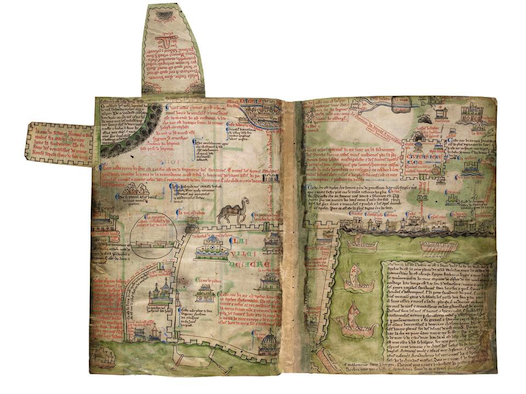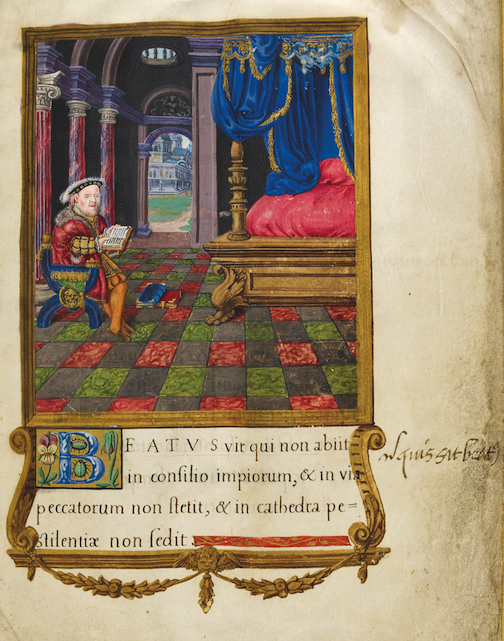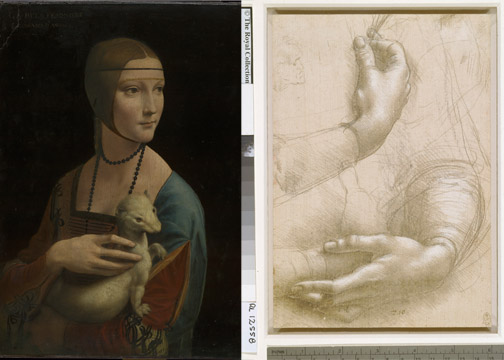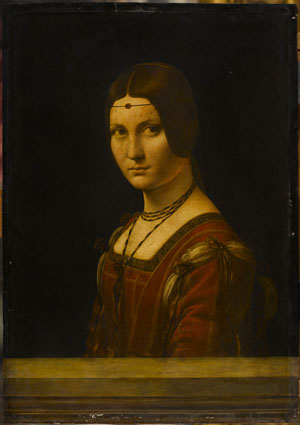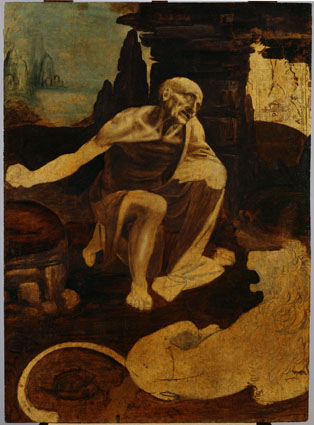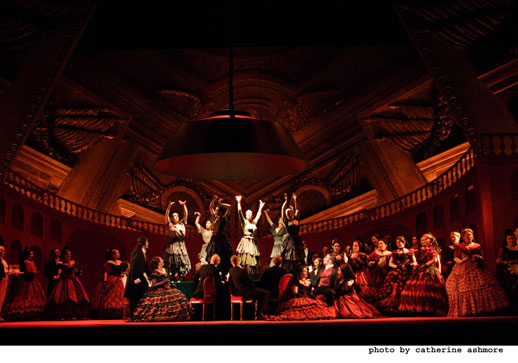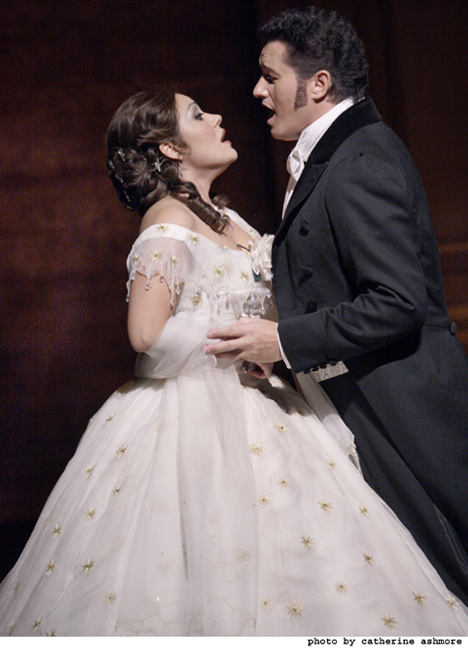A once-in-a-lifeime opportunity to view the most complete display of his paintings ever held
London’s National Gallery is currently hosting an exhibition featuring nine of the 15 known surviving paintings of Leonardo da Vinci. Such is the hype created by this unprecedented event that advance tickets sold out the first week of the opening. It has also generated a lively sale of the almost impossible to come by tickets on the black market.
Leonardo is unquestionably one of the pivotal figures of the high Renaissance and the most versatile polymath of all time. He was an artist (both painter and sculptor), inventor, musician, poet, architect, engineer (hydraulic and military), town planner, botanist, anatomist, astronomer and philosopher. In addition, he had a great interest in the mechanism of flight and optics. He wrote extensively, filling up several notebooks with his characteristic left-handed backward script starting at the right side of the page and moving to the left. It needs to be deciphered with a mirror.
Leonardo was more interested in the idea and concept of a creation than of the final product; as a consequence, he seldom brought any of his brilliant projects to a successful conclusion. His fertile mind had moved off to something else.
Previous exhibitions have highlighted Leonardo’s achievements as an inventor, scientist or draftsman. This is the first exhibit to be dedicated to his paintings. It correlates to the 18 years that Leonardo spent in the service of Ludovico Sforza, ruler of Milan. This was probably the most productive period of his career, which began in 1482 when he was 30 years old.
In his lifetime, Leonardo started no more than 20 pictures and most experts agree that only 15 of these paintings that survive were entirely by his own hand. Several of them are also incomplete. Leonardo’s career began in Florence, where he was apprenticed to Verrocchio, who ran an important workshop. He was trained in a tradition where every feature of a painting, not only the dominant focus, was given equal importance, whether it be a bird, flower, forest or landscape.
In addition to the paintings, the exhibition also features a large selection of drawings and studies by Leonardo as well as other contemporary artists, many of whom were trained by Leonardo himself. Thirty four of the drawings on show come from the Royal Collection at Windsor.
Leonardo’s first painting in the exhibition, from the Ambrosian Art Gallery in Milan, is a portrait of a young man (a musician) in a three quarter profile pose. This was almost unique for that time in that it turned the sitter to engage the viewer.
Perhaps the most captivating portrait in the entire show is that of the 16-year-old beauty, Cecilia Gallerani, who was Sforza’s mistress. She is shown holding an ermine, an animal prized for its lovely coat. This eye-catching painting comes from Cracow in Poland and is acknowledged to be one of Leonardo’s greatest creations.
Hanging close by is another beguiling image, La Belle Ferronnière, from the Louvre. This portrait is believed to be Sforza’s wife, Beatrice d’Este.
Ironically, wife and mistress appear on adjacent walls in the same room. From the Vatican comes the remarkable unfinished painting of the early fourth century Christian, St Jerome who is beating his breast with a stone.
Shown together are the two versions of the Virgin on the Rocks, the earlier one from the Louvre and the second from the National Gallery’s own collection. The latter was especially restored for this exhibit. To see these two paintings on either side of the same gallery is a real privilege. As pointed out in the outstanding scholarly exhibition catalogue by Luke Syson and Larry Keith, it is unlikely that even Leonardo himself had the privilege of viewing these two pictures together. The Paris version is softer and not as sharp as the one from London, but other subtle differences between these two masterpieces become readily evident when viewing them together.
Another noteworthy recently restored painting is of Christ as Salvator Mundi (Saviour of the World). This has only recently been attributed to Leonardo. The face has not worn well, probably a result of too rigorous cleaning in the past, and unlike the hands, it lacks the subtlety seen in so many of Leonardo’s other portraits.
All the paintings that Leonardo undertook during his period in Milan are in the current exhibit with the exception of the unmoveable fresco, the Last Supper, housed in the dining hall at the monastery of Santa Maria delle Grazie in Milan. Because of the experimental technique used by Leonardo in executing this fresco, it started to deteriorate almost immediately after its completion. The final room of the exhibit displays a full-scale copy of the Last Supper by Giampietrino, one of Leonardo's apprentices and includes drawings by Leonardo of some of the individual figures of his epic fresco.
This exhibition, with loans of Leonardo’s paintings from Cracow, Paris, Milan and St. Petersburg is without question one of the most monumental and impressive ever mounted, and represents a real triumph for the National Gallery and its exhibition curator, Luke Syson. To see nine pictures by the master is a feast for the eyes of connoisseur and non-expert alike. Because of the current international financial uncertainty, art experts were predicting that the age of the blockbuster museum show was over. The National Gallery has proven them wrong.
Leonardo da Vinci: Painter at the Royal Court of Milan¸ remains on view until the end of the first week of February, 2012. Some 500 tickets are made available each day and huge lines begin to form in Trafalgar Square very early in the morning. Within minutes of opening, every image is swamped by eager viewers. The best time to visit is in the afternoon about one hour prior to closing. At this time, the gallery is least crowded.
Part of this article was originally published in The Jerusalem Post
Legend to Figures
Fig 1: Leonardo da Vinci: Portrait of Cecilia Gallerani (‘The Lady with an Ermine’),
Property of the Czartoryski Foundation in Cracow on deposit at the National Museum in Cracow
© Princes Czartoryski Foundation
Fig 2: Leonardo da Vinci: Studies of hands
Lent by Her Majesty The Queen
The Royal Collection © 2011
It has been suggested that these hands served as a preparatory drawing for the Portrait of Cecilia Gallerani
Fig 3: Leonardo da Vinci: Portrait of a Woman (‘La Belle Ferronnière’)
Musée du Louvre, Paris, Département des Peintures (778)
© RMN / Franck Raux
Fig 4: Leonardo da Vinci: Saint Jerome
Musei Vaticani, Vatican City
© Photo Vatican Museums
